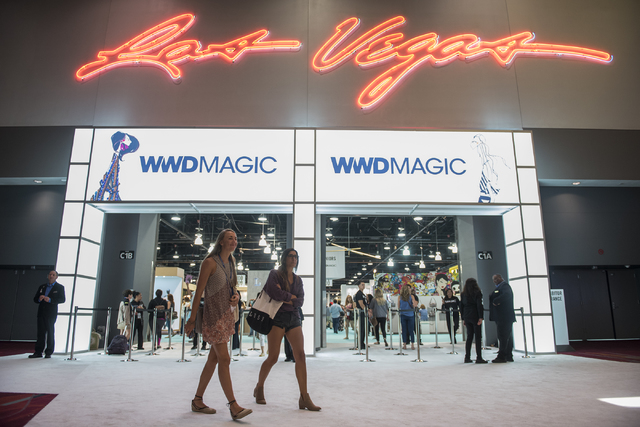Variety of reasons explain financing for Las Vegas stadium, convention center upgrades

When legislators dig into the details of financing a stadium and a convention center expansion at next week’s special session, they’ll have plenty of questions.
One question may involve why the financing package for the $1.4 billion Las Vegas Convention Center project requires a room tax increase of 0.5 percentage points, while a stadium construction subsidy of $750 million requires a higher room tax increase of 0.88 percentage points.
A simple answer: Resources already exist for the convention center project.
The tax increases would generate the revenue necessary to retire the general obligation bonds that would fund the two projects.
The Las Vegas Convention and Visitors Authority, operators of the convention center, has been doing what it does since 1955: bonding for the acquisition of land and construction of exhibition halls.
The convention center, opened in 1959, has grown to house 3.2 million square feet. That would grow to nearly 4 million square feet once a new hall is built. The organization’s leadership also has agreed to make upgrades to the existing facility that will freshen and improve it to stay competitive with rival convention cities.
The $1.9 billion domed stadium, meanwhile, would be built from scratch. Land must be acquired, infrastructure must be built and the venue must be engineered, designed and constructed.
Jeremy Aguero, a principal with Las Vegas-based Applied Analysis, worked with the Southern Nevada Tourism Infrastructure Committee and the LVCVA to develop the financing plans.
“The LVCVA provided a financial model that detailed its current operations and its plans for the expansion and renovation of the Las Vegas Convention Center through 2030,” Aguero said. “We then reviewed the model and offered some alternatives to determine potential impacts on available revenues and expected capital outlays and operating expenses.”
Aguero said it helped that the LVCVA generally budgets conservatively. Add to that a general upswing in the economy that has tax revenue tracking ahead of projections and it provides a formula that gave the 11-member committee the confidence to unanimously approve the plan.
Two of the key elements of the package are the ability adjust spending in other LVCVA operational line items — marketing and advertising, for example — and a strategy to cap the local government room tax collection allowance at $25 million a year.
The LVCVA’s board of directors unanimously approved the strategy earlier this year, and it’s projected that it will enable the collection and use of $123.1 million between 2017 and 2030.
State law requires Clark County and municipalities to collect room taxes in Southern Nevada jurisdictions.
Rana Lacer, the LVCVA’s chief financial officer, used the county as an example of how collections occur.
“They (the county) are the collecting entity for all the county and Strip resort properties,” Lacer said.“So they collect the whole 12 percent.”
Lacer said in her example, the county collects the gross amount and then carves out the county’s portion. It then gives state schools their portion, the Nevada Commission on Tourism its portion and the LVCVA its portion.
“Every quarter, the LVCVA sends the cities 10 percent of the total amount we receive. The original intent was to offset the administrative cost of doing that for us,” she said.
But over time, room tax collections have grown. So instead of sending 10 percent of the total, the amount paid for the administration of collection would be capped at $25 million.
Capping it at $25 million would save the LVCVA $2.5 million to $3 million in the first year, assuming the tax is implemented next year, Lacer said.
“It starts out fairly minimal, $3 million, but over time we can structure that in to support the debt and, in addition, we’ll have the extra 0.5 percent (tax) to add to our resources,” she said.
By 2030, the amount collected above $25 million is expected to be $15 million a year, based on projections.
While the LVCVA has years of experience financing and building projects, the local stadium plan has none. A part of the legislation under consideration would include the formation of a seven-member stadium authority board selected by the governor, Clark County commissioners and the developers.
That board would be responsible for financing construction and eventually would add management and programming of the facility to its duties.
The Review-Journal is owned by the family of Las Vegas Sands Corp. Chairman and CEO Sheldon Adelson, who are private partners in the stadium project.
Contact Richard N. Velotta at rvelotta@reviewjournal.com or 702-477-3893. Follow @RickVelotta on Twitter.